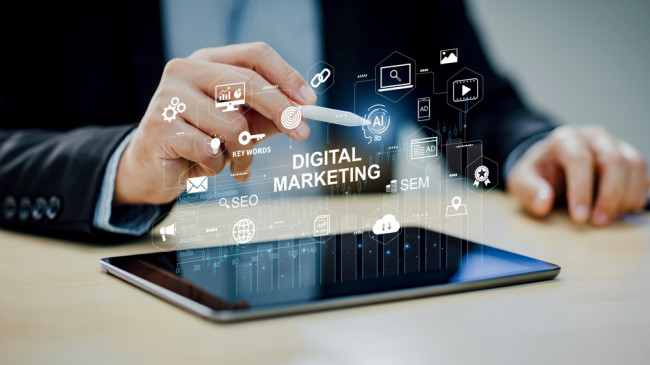Building credibility for a brand in an info-saturated world is becoming indispensable to excel at thought leadership marketing. Companies and associated professionals build trust on their behalf by demonstrating domain expertise. Their contributions to marketing, outreach, and industry-focused networking efforts help companies differ from the competition.
This post explains the crux of building brand authority and credibility via thought leadership marketing. Still, all involved parties must admit that responsible thought leaders often engage more in value-building activities than promotional efforts.

Your thought leaders will secure memorable storytelling victories only after tonally consistent and professionally planned content delivery. Required knowledge gain encompasses familiarizing with goals, strategies, and examples of effective thought leadership campaigns. The eventual influencing power of discussions will ensure better positioning, sales, and industry peer collaborations. This approach allows brands to capture credence among key stakeholders.
What is Thought Leadership Marketing?
Thought leadership marketing, therefore, involves the conscious creation and distribution of content and insights. Remember, it must regularly demonstrate the depth of a brand’s expertise, values, and commitment to moving the market forward. It is a form of marketing that shares knowledge, starts new discussions, and creates a unique position.
Enterprises also expect thought leaders to talk about solutions for challenges frequently faced by professionals in a field. For this reason, the DNA of thought leadership marketing services consists of:
Meaningful conversation with audiences,
Giving people solutions for domain-specific challenges,
Giving people innovative ideas that shape the future of the field,
Not being afraid of sharing less popular but more effective work philosophies.
The Two Paramount Goals of Thought Leadership Marketing
Goal 1: Establishing Evidence-Driven Brand Credibility
Consistent, thoughtful, and informative content that educates and inspires lets your leaders prove their expertise claims in a field. That is to say, thought leaders’ credibility might be defined as a function of the following:
- their years of experience,
- number of research citations,
- contributions to innovation breakthroughs.
Therefore, brand credibility necessitates extensive evidence.
Goal 2: Being a Trusted Source for Industry Updates and Best Practices
It builds a long-term relationship with the audience by stating authenticity and thoughtfulness. Understand that reputed thought leadership services in the US are not afraid to explain industry shortcomings. They boldly pinpoint recurring customer problems and encourage brainstorming. Thought leaders and honest storytellers recognize the long-term downsides of fake positivity in corporate communications.
Both goals of thought leadership marketing form a robust basis for brand authority. That ensures better loyalty among customers, enhanced reputation, and more influential standing in the market.
Strategies for Successful Thought Leadership Marketing and Brand Credibility
A strategy embracing authenticity, consistency, and value will always govern the thought leadership practices. The following approaches undoubtedly ensure your message delivery and tech knowledge exchanges are on par with the best of the best storytellers, coaches, and authoritative thinkers in the target industry.
1. Identify Your Niche Expertise and Focus Areas
The essence of thought leadership still encompasses the core expertise of the brand. Brands must determine what they are uniquely qualified to discuss or advocate. Across all content delivery and community engagement strategies, they must provide outcome-oriented, useful insights. On the other hand, brands and their thought leadership partners that fail to add value will perish. After all, they will be targets of critical, unfavorable audience perception.
For example, a technology company dealing with lifestyle-improving interactions with artificial intelligence may focus on topics like AI ethics. Furthermore, they can consider including respectable, data-backed messages concerning data privacy or new applications of AI. Likewise, content ownership in this age of AI offers opportunities to revisit industry best practices.
Concentrating on specific areas of expertise would ensure the voice of the brand is valid. This work ethic highlights that the company’s thought leadership insights come from actual knowledge and experience. That is why the brand can keep up with a lot of things going on in the industry. Those niche areas also facilitate better organic reach across social media platforms and search engines.
2. Developing Relevant Thought Leadership Content
It is challenging to focus on thought leadership content. However, it helps to create relevant content. For responsible storytellers, thought leaders, and presenters, educating and informing the audiences based on topic relevance is essential. Sharing deeper knowledge or insight that is useful for the reader also instills more faith in the brands where thought leaders hold impactful positions.
However, focusing on a topic cluster does not mean a thought leader must always cherish a positive outlook. After all, challenging the status quo through practical ideas enhances the brand leaders’ credibility. Offering new insights or questioning conventional wisdom in order to provoke curiosity and involvement is today’s thought leadership marketing 101.
3. Use Data to Support Claims and Increase Credibility
Data-based content makes thought leadership marketing campaigns more credible. While opinions can be profound, hard evidence goes a long way in making anyone believe that your leaders are experts on a certain subject. The brand shows it is meticulous and reliable by means of evidence.
In thought leader development initiatives, authoritative resources can comprise peer-reviewed research publications and customer success stories. Meanwhile, case studies and whitepapers are multipurpose. They can serve as consumer education and sales enrollment catalysts. Several brands’ understand that their thought leaders have a better chance of securing public speaking invitations through such credibility boosters.
On a related note, data usage provides the opportunity for uniqueness. Describing complex ideas using technical visualizations helps enhance audience comprehension. Unique, original, or first-party data captivates the audience.
Examples of Good Thought Leadership Marketing
Many companies have resorted to using thought leadership marketing to help their brands gain credibility and position themselves as an authority. Consider the following examples to get a glimpse into this method’s potential.
Example 1: McKinsey & Company
McKinsey is the world’s leading management consulting firm. As a result, it maintains clear and detailed reports on a variety of topics, including research studies and articles, in its “McKinsey Insights” platform. Its knowledge-sharing offerings for broader audiences address economic issues and digital transformation methodologies. This firm presents itself as a leading business consulting authority by publishing regular research-based insights.
Example 2: HubSpot
HubSpot is an inbound marketing leader that has established itself as a “thought leader” through the publications of hard-to-dismiss resources. Its skill development knowledge pieces attract professionals in digital marketing, virtual sales mechanisms, and customer relationship management. By hosting webinars and posting whitepapers, HubSpot’s culture of educating customers through the use of excellent content shines brighter than its business rivals.
Conclusion
Building brand authority with thought leadership marketing campaigns is essential at a time when people look to brands for expertise, ethical practices, and reliable guidance. This strategy empowers global companies to enhance their reputation. That is why they can seamlessly establish the tone in their spheres of influence by building high-quality content ecosystems.
World-recognized storytellers and thought leaders often utilize validated data, participate in industry communities and strive for message consistency. Thought leadership marketing builds trust and promotes customer loyalty.
It also aids in attracting top talent to ensure long-term business growth. As the new digital space continues to impact all industries alike, thought leadership will remain a cornerstone of effective, credibility-based marketing that makes you stand out from the crowd of competitors.















